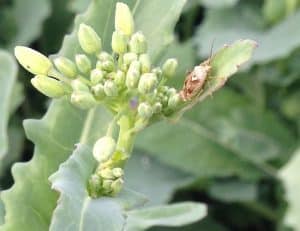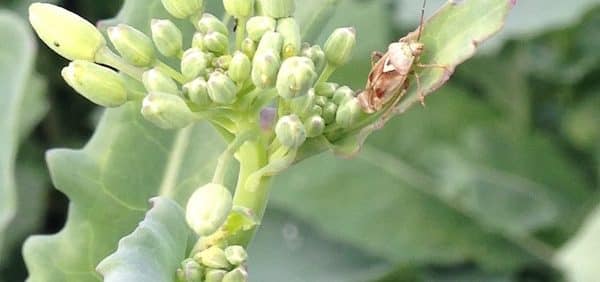While scouting for insects this week, you may find…
Lygus on buds. Spraying lygus at this early stage rarely provides an economic benefit. Lygus do most of their damage at the pod stages. Scouting as the crop nears the end flowering — at or after the “mid” pod stage — will let you know if Lygus may require chemical control. Timing is too early to know how lygus pressure will develop in your area. There is no developed threshold for lygus at the bud or early flower stage as damage is unlikely until later in the season. Other possible causes of bud loss in pre-bolting canola.

Cabbage seedpod weevil. Numbers are high in some areas — with at least one report of 70 per 10 sweeps north of the typical CPSW area in Alberta. The threshold is 20 to 40 per 10 sweeps. If first sweeps indicate high numbers, check a few areas throughout the field. Weevils are good fliers and will sometimes concentrate at field margins, particularly as flowering starts. Read more.
Swede midge. While swede midge continues to expand its territory in Western Canada, numbers and damage levels have remained low, in general. However, that could change quickly, based on the Ontario experience. Flowering is a good time to scout. Look for larvae inside florets, and for blackening and scarring of floret tissue typical of larval damage. What to look for? If you find these “springing” larvae, contact your provincial entomologist or CCC agronomist.
Diamondback moth. Keep them on your scouting list, even if damage has not been high the past few years. It takes 200-300 larvae per square metre to cause economic damage at the pod stage. It seems beneficial insects are helping to keep diamondback numbers below economic thresholds, but flare ups are possible. Read more.

